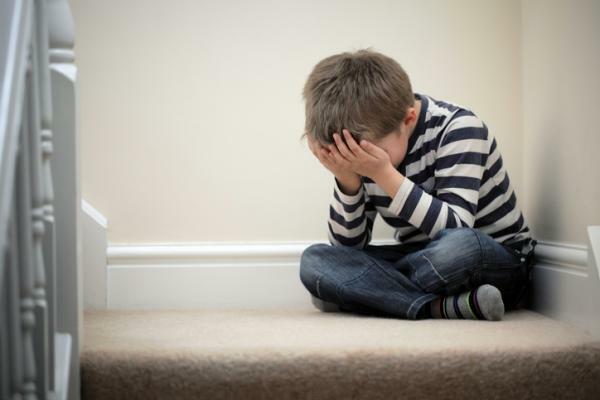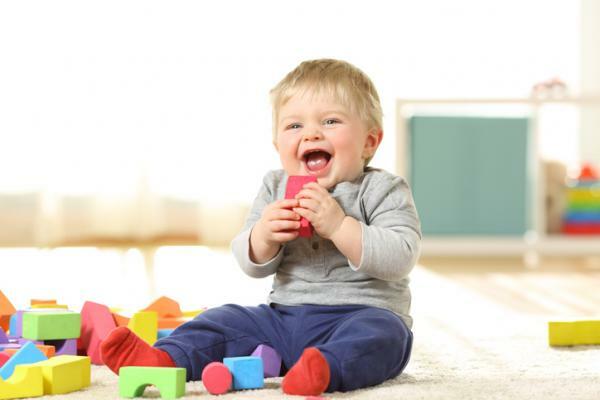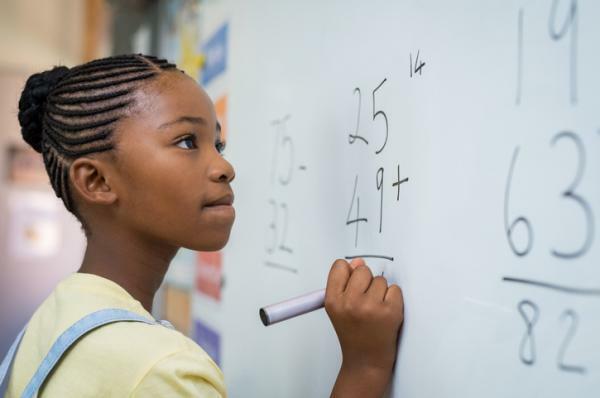
Children see numerous deaths on television, but when it comes to a close relative, a fairly common tendency is to hide it. However, the child is capable of understanding death from the age of 5 and can give a fairly precise definition from the age of 9. For them, everything that moves, feeds, drinks and reproduces is alive.
The acquisition of the notion of irreversibility is later, death is seen as something distant related to old age. In this Psychology-Online article, we will describe pathological grief in children, its symptoms and treatment.
Index
- Pathological grief in children: symptoms
- Types of pathological grief according to age
- Difference between normal and pathological grief
- Activities and tips for dealing with grief in children
Pathological grief in children: symptoms.
Pathological grief can be described as a prolonged sadness (duration longer than we would normally expect) and intense that affects the normal functioning of the child on an emotional, cognitive, physical and social level. Consequently, the child has a prolonged inability to do things that he did before death.
As research on pathological grief in children has increased, it has been recognized that it is rare for children experience extreme grief symptoms that produce very persistent distress and impairment in the functioning of the boy. Some professionals suggest grouping symptoms into different domains. According to this classification, the main symptoms of pathological grief are:
Thought
- Rumination about the circumstances of death
- Frequent disbelief or inability to accept death
Separation distress
- Persistence and intense longing for the deceased person
- Frequent feelings of loneliness or emptiness
- Negative thoughts about life without the deceased or recurring need to bond with the deceased
- Worrying thoughts about the deceased that impair daily functioning
Feelings
- Persistent feeling of shock, lightheadedness, or emotional numbness since death
- Recurring feelings of anger or bitterness regarding death
- Difficulty trusting or caring for others since the loss
- Experiencing pain or other somatic symptoms, hearing the voice of the deceased, or seeing the deceased person
- Intense emotional reactions to memories of the deceased
Behaviour
- Excessive worry or avoidance of places, people, and things related to death.

Types of pathological grief according to age.
It should be borne in mind that these symptoms manifest in different ways and proportions depending on the age of the child. Among the youngest, grief can be a relatively significant impact. In those older children, the grief is similar to that of the adult, but the child is still a child, and therefore integrates the death in his games: talking to the imaginary father, playing at a funeral to fight against irreversibility, etc.
Preschool and school age children
- Exaggerated fear
- Attachment problems with primary caregivers
- Traumatic gambling
- Persistent regression
Tweens and teens
- Risk behaviors
- Ideation and suicidal behavior
- Inability to create a story about the loss
- Very negative outlook on the future and inability to set goals
Some studies suggest that in general, in younger children fear and attachment problems are described more frequently, while in older children risk behaviors are more common.
Difference between normal and pathological grief.
Grief processes in the face of significant losses They can follow a relatively normal course, however, when the grief becomes complicated, that is, it is pathological, the symptoms are characterized by being:
- More intense
- More persistent
- They interfere with the child's daily functioning
- Significant reduction in self-esteem
- Feelings of insecurity, which may affect the child's identity
Controversy
Some psychological currents criticize the diagnosis of pathological grief, arguing that the penalty is a emotional human reaction normal and, therefore, it should not be medicalized or pathologized, that is, it should not be classified as a psychological disorder. The fundamental criterion used today to discriminate between clinical and non-clinical is persistence symptoms and study the level of interference with the normal development of life that exists in each case.

Activities and tips for working with grief in children.
- Remember that the grieving process differs from one person to another. In addition, it is sometimes difficult to identify that the duel is getting complicated.
- Encourage the child to talk about your feelings or thoughts, as it can help you cope with the grieving process.
- Do not doubt to look for help from a specialist if necessary
Advice from psychology
- A grief is complicated when the child is trapped in pain
- There are a number of factors that increase or decrease the probability of a pathological grief, such as the relationship that the child had with the deceased person or the presence of a good support network.
- Pathological grief is the environment around which the child's life revolves
- Grief is a natural response to the death of a loved one, but when it complicates and becomes pathological, it is detrimental to the child's life. In these cases, it is important go to a specialist.
This article is merely informative, in Psychology-Online we do not have the power to make a diagnosis or recommend a treatment. We invite you to go to a psychologist to treat your particular case.
If you want to read more articles similar to Pathological grief in children: symptoms and treatment, we recommend that you enter our category of Emotional and behavioral disorders.


